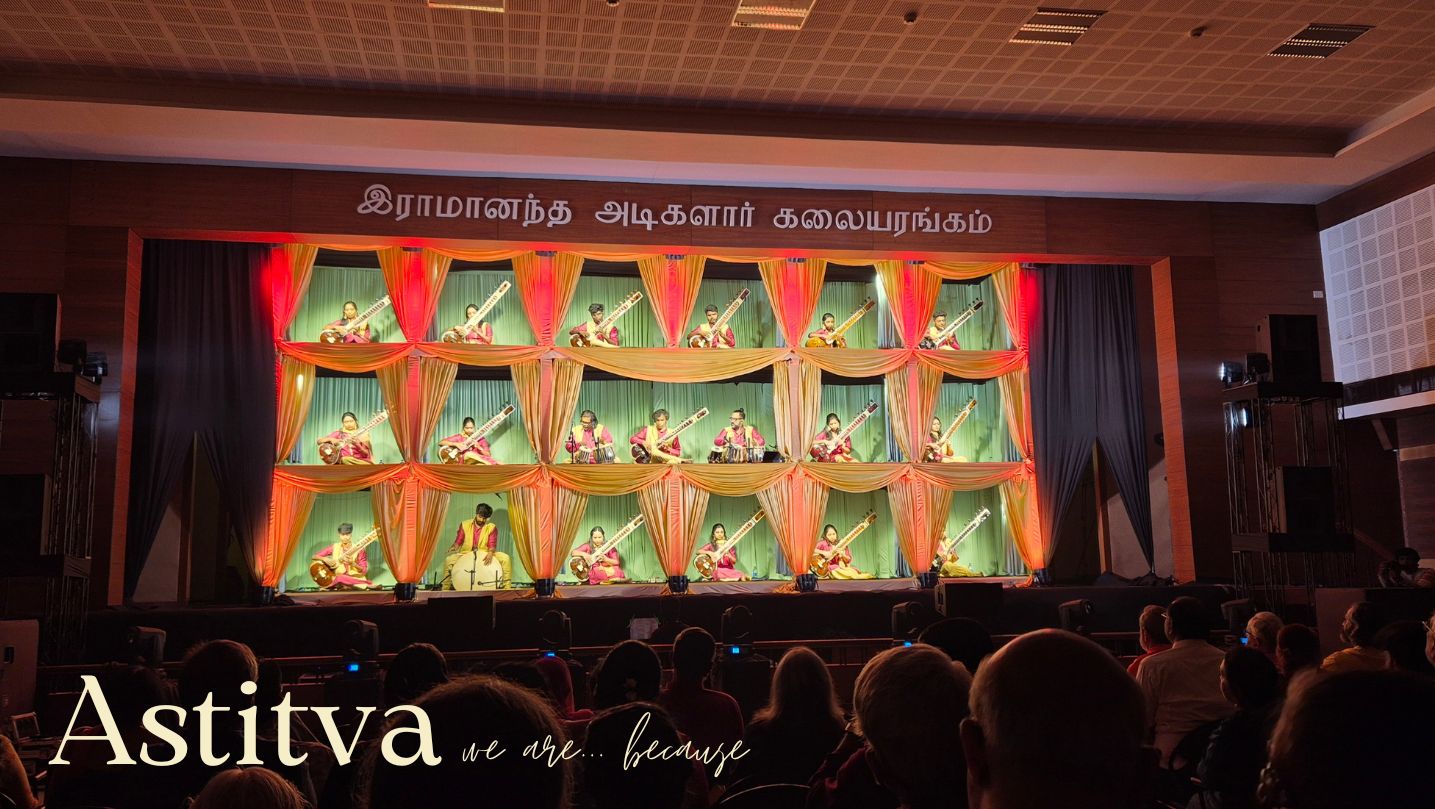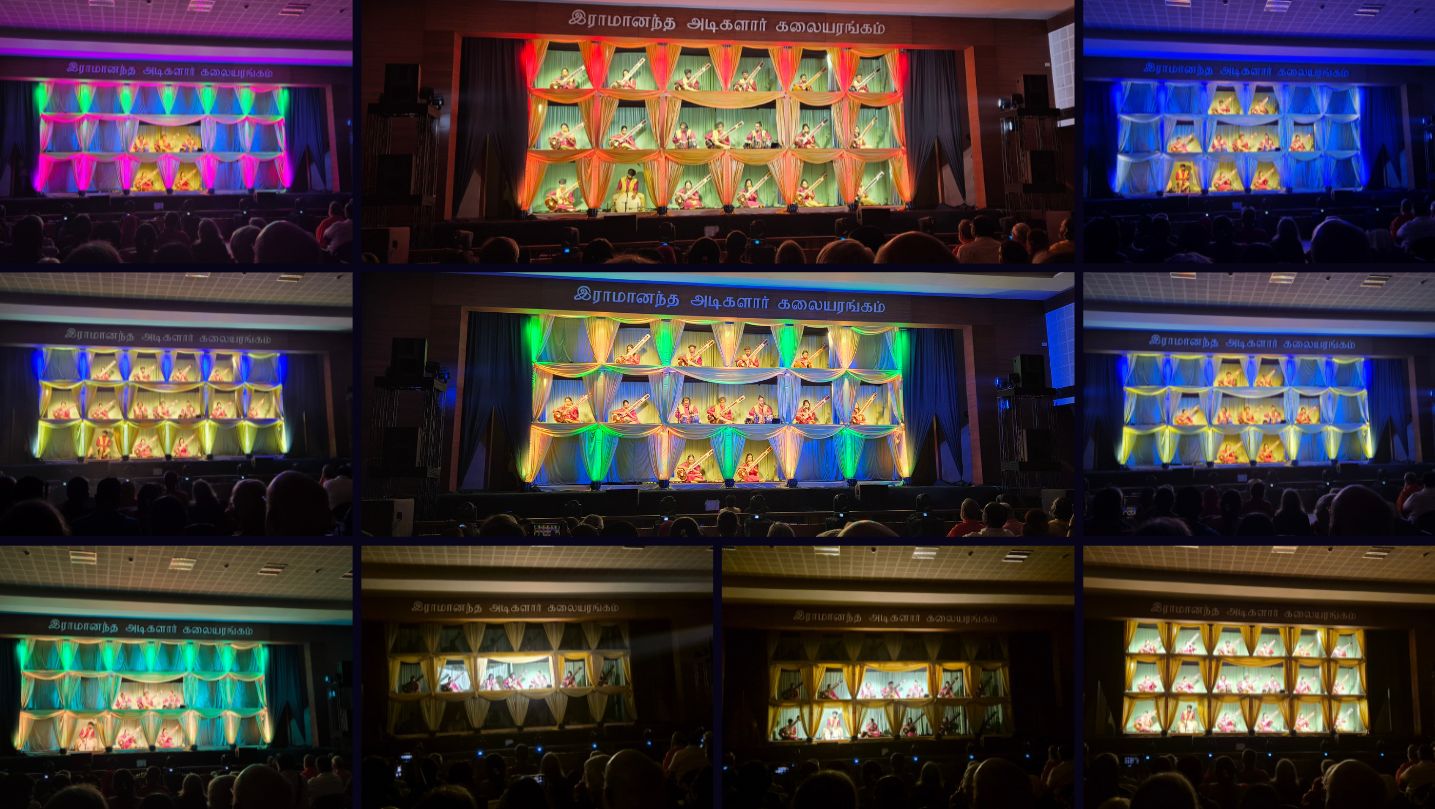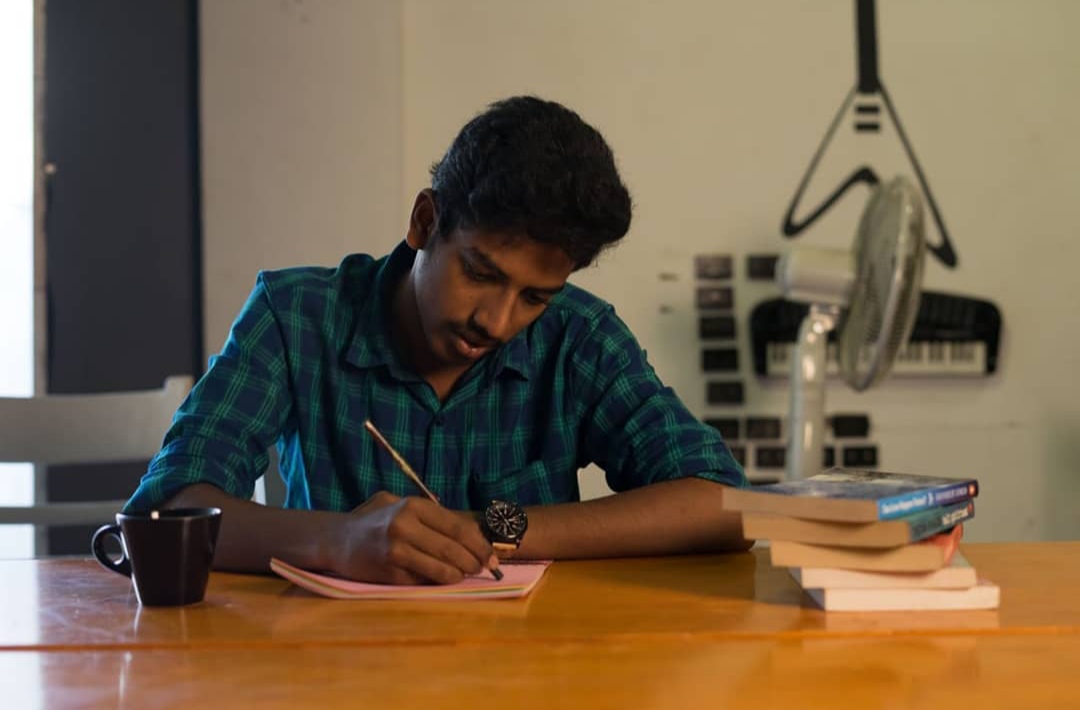
Happiness quite unshared can scarcely be called happiness. In that spirit, we wish to share with you, in fact, walk you through a musical odyssey we witnessed firsthand. Stepping into the Ramananda Adigalar Auditorium at Kumaraguru Campus, the air vibrated with anticipation, palpable amongst the audience eager to immerse themselves in exploring "Astitva - we are… because.” This wasn't just a Sitar performance; it was a promise to unravel the very essence of human existence, a whisper inviting us to appreciate the life that the world has offered.
It's no wonder that, walking into the auditorium felt like stepping into a space imbued with purpose and passion, as it was a testament to the enduring legacy of Shivanjali's Temple of Fine Arts. Founded in 1986 by His Holiness Swami Shantanand Saraswathi, this institution is more than just a school for the arts; it's a sanctuary for the human spirit. Inspired by the belief that "Art is one path to and from the Divine," their mission transcends mere technical skill, aiming to nurture "good citizens of character" and individuals who embody "permanent values." Their dedication to this philosophy resonates in every aspect of their work, from the diverse curriculum encompassing various Indian classical dance forms, vocal and instrumental music, and even international dance styles, to their focus on creating not just accomplished artists but also "good people."
As the lights dimmed, 3 figures emerged on stage, their vibrant costumes hinting at the vibrant narrative about to unfold. A Sitar player and 2 percussion Tablas, their instruments poised like extensions of their souls, stood alongside percussionists, their rhythmic tools ready to draw a soundscape of emotions. The unique stage design, a majestic vertical structure divided into 18 cubicles stood before us, little did we know that 20 players were waiting behind the curtains with each ready to contribute their verse to the grand symphony of life. State-of-the-art technology became an invisible hand, sculpting the music with stunning clarity, ensuring every note resonated deeply within us. Once again, this wasn't just a performance; it was an invitation, a promise to delve into the profound mysteries of existence, one captivating melody at a time.
Mrs. Gayathri Prakash's introductory words served as a gentle tug on the heartstrings, setting the stage for the emotional journey to come. Then, as if echoing the whispers of our own inner voice, Shri Amit Mathur, embodying the role of Mr. Mind, took center stage. With each pause in the music, he narrated the story of our life, the experiences that resonated within every listener present. We were toddlers again, we chased youthful dreams, we settled desires and we attained peace. With each transition, the music shifted, guided by the masterful compositions of legends like Ustad Usman Khan, Shri S.M. Anand, Isaignani Ilaiyaraja, and Shri Papanasam Shivam. Each note, each Raag, and each Taal painted our existence, from the carefree joy of childhood to the introspective wisdom of age. This wasn't just a performance; it was a mirror reflecting our own lives, reminding us of the universal wave that binds us all.

Under the expert guidance of Shri S.M. Anand, a disciple of the legendary Ustad Usman Khan, the ensemble moved gracefully through the narrative's ebbs and flows. He wasn't just the conductor; he was the sculptor, shaping the music into a tangible representation of our collective journey. His own students and players, Vedasruthi, Swathy, Nimisha, Srinithi, Padmasharan, Harshabhuvan, Lalithai, Chandra, Chinmayee, Saradha, Premkumar, Revathi, Abhinaya, Hema Priya, and Bharat Krishna, became living instruments, their fingers dancing across the Sitars with remarkable synchronicity. Each note they produced became a shared memory, a whisper of joy or sorrow that resonated deep within the audience.
Adding another layer of depth and complexity were the masterful percussionists, Shri Augustine Paul, Shri Lalit Kumar, and Adith Mohan Kumar. Their rhythmic dance of fingers provided the heartbeat beneath the melodies, their instruments acting as the very pulse of life itself. They pulsed with youthful exuberance during the playful stages, then transitioned to a steady, contemplative rhythm as the narrative turned towards maturity. Their synergy with the Sitar players was seamless, creating a unified soundscape that transported us through the spectrum of human experience.
Over 1000 attendees filled the auditorium, united not just by their presence but by the invisible thread of music. Age became irrelevant; the playful notes of childhood stirred a young child from the audience, his laughter echoing through the hall, a spontaneous dance across the ramp. It was a poignant reminder to the audience that music transcends language, age, and understanding. It speaks directly to the soul, igniting emotions and memories deep within each of us. In that moment, the performance wasn't just on stage; it reverberated within every heart, solidifying the universal language of music's transformative power.
A warm note of gratitude fell upon the audience as Mrs. Gayathri Prakash acknowledged the invisible hands that brought "Astitva" to life. She expressed sincere appreciation to the technical support team – Anand Krishna, Dhilip, Sujith, and Bharat Krishna – whose dedication ensured the seamless flow of light, sound, and magic behind the scenes. Their contribution, often unseen, became the silent foundation upon which the musical journey bloomed, reminding us that every masterpiece rests on the shoulders of a collective effort.
As the final strains of the Sitars faded, the applause rolled over the awestruck audience, and a well-deserved standing ovation was given. "Astitva" didn't simply end; it lingered, leaving an indelible mark on our hearts. It wasn't just a performance; it was a profound exploration of what it means to be human, a package of joy, sorrow, ambition, and reflection. Standing for the very vision of Shivanjali’s Temple of Fine Arts, I am sure they have become successful in creating “good people” and “good memories” came as an add-on. The Verandah Club salutes the phenomenal contribution of Shivanjali's Temple of Fine Arts to the world of Art and Music.
|| Vijayi bhav ||
 Vigneshwaran, Senior Correspondent of TheVerandahClub.com is both a skilled digital content writer and marketer by profession, as well as an avid independent writer driven by his passion. His literary talents extend to crafting beautiful poems and captivating short stories. In addition to these creative pursuits, he has also authored a book titled "Halahala," which can be found on Wattpad.
Vigneshwaran, Senior Correspondent of TheVerandahClub.com is both a skilled digital content writer and marketer by profession, as well as an avid independent writer driven by his passion. His literary talents extend to crafting beautiful poems and captivating short stories. In addition to these creative pursuits, he has also authored a book titled "Halahala," which can be found on Wattpad.
NEXT ARTICLE